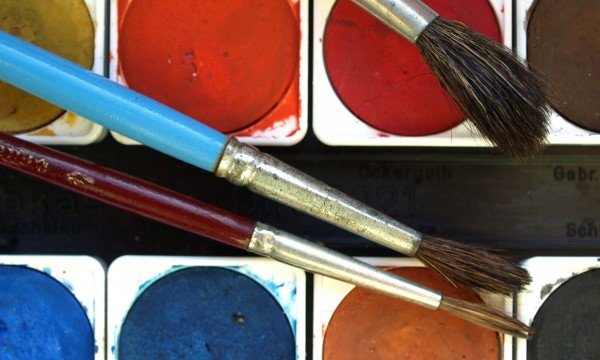Professionals are the first to assert this: in some cases, it is not necessary to wash the painting material thoroughly … saving time and energy! If you dread this often tedious cleaning, read the following, you will discover simple maintenance techniques.

1. Clean excess paint
- Begin by putting the excess paint back into the jar: remove as much of your paintbrush as possible by wrapping it in newspaper and pressing your fingers over the container; Scrape off the roll with a knife.
- Then wipe your equipment with newspapers, old rags, or pieces of cardboard.
- Let them dry before throwing them in the trash.
2. Maintain water painting material
- If you paint with water-based paint, mix hot water and a few drops of dishwashing liquid into the cleaning bucket.
- If the acrylic paint does not clean well, it probably contains additives (similar to those in oil paints) to improve its adhesion, gloss and / or durability.
- After washing and rinsing your equipment with water, soak it in turpentine until it is completely clean.
- Wash with hot soapy water to remove any traces of solvent.
3. Maintain oil painting material
If you choose oil painting:
- Pour a small amount of turpentine or mineral spirits, about ten centimeters (four inches) in the bottom of the bucket will suffice.
- Immerse yourself in the brushes.
- Clean well between the hairs using an old comb or an old fork.
- Rub the handle with a wire brush.
- Wash the roller after rolling it on newspaper or on a grid to remove as much paint as possible.
- Remove the handle, soap and rinse.
- Cover the bucket with solvent or dirty water with a cardboard or newspaper, this will avoid any evaporation, and let decanter.
4. Using buckets
Use two plastic pails, one for cleaning and the other for rinsing, with a capacity of five liters (a little over a gallon). You can store all your equipment and reuse water or thinner, which does not go into the sewer.
Rinsing bucket
- Use the rinse bucket after removing the largest of the paint.
- Fill it with clean water for the paint with water, clean solvent if you have used oil paint.
- Cleaning is completed when the liquid is clear when you press your brush or roller.
- Cover the bucket with cardboard or newspaper and leave to settle.
- Allow the solid particles of the paint to settle at the bottom of the buckets overnight.
- The next day, carefully remove the relatively clear water or solvent that floats; Recover it and return it in its original container (never store it in plastic, which would eventually deteriorate).
- Using a blunt knife or paint squeegee, peel off the solidified mass from the bottom of the bucket, place it in several layers of newspaper and discard.
Not finished yet?
No need to thoroughly clean your tools if you need to paint the oil the next day. Remove only excess paint, then wrap brushes and rollers in foil or plastic to prevent them from drying.
You can do without the cleaning chore until the end of the job.

Particularly instructive look onward to coming back.